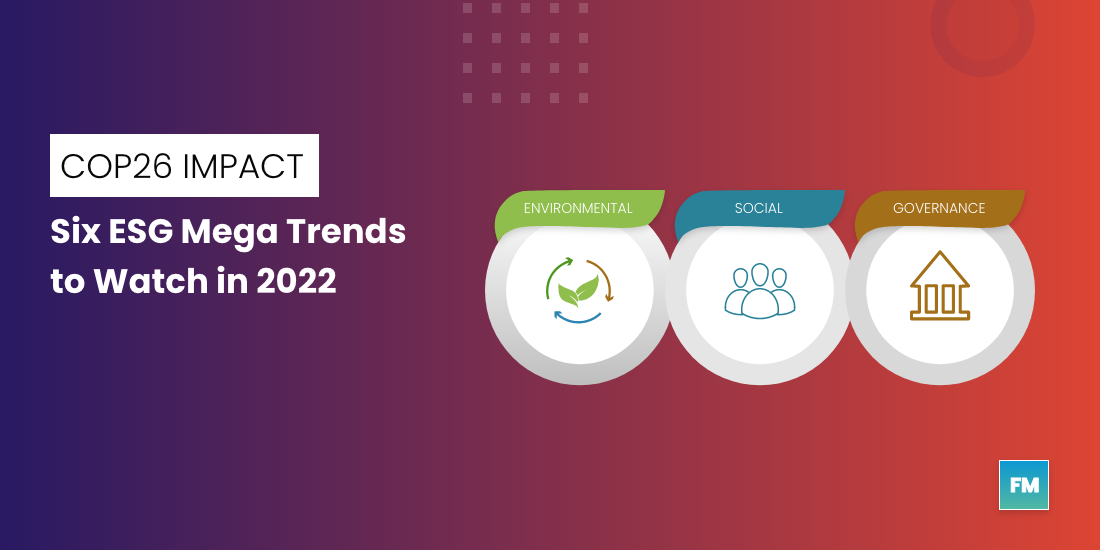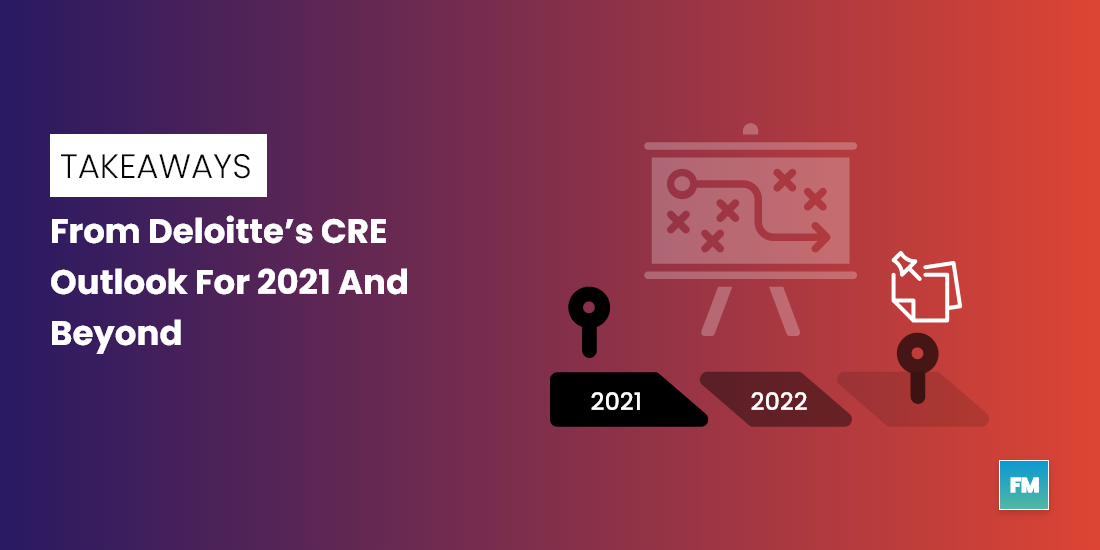The trends that set the tone for a more sophisticated ESG environment gathered steam at the Paris Agreement in 2015. Six years later, these trends further intensified and evolved at the 26th United Nations Climate Change Conference of the Parties (COP26), which provided clear direction for ESG-oriented action from governments, business leaders, and the financial industry. Those who have progressively embraced the ESG movement know that companies with strong corporate governance and good business practice are best-positioned for the future.
Down below are six ESG megatrends likely to feature prominently in the actions of companies, investors, and regulators in ways that will redefine the ESG landscape in 2022.
Six Esg Megatrends To Watch In 2022
1. Growing Multi-Sector Collaboration & Finance on ESG Issues
If 2021 taught us one thing, it was that global challenges require global collaboration. Fighting climate change is perhaps the biggest environmental challenge of our time. While governments have always been billed with this responsibility upfront, the good news following COP26 is that private sector players and capital owners have allied to contribute as well.
Apart from world leaders pledging to deliver on climate goals at COP26, more than 30% of the 2,000 largest publicly traded companies in the US have committed to going net-zero by 2050. Over 250 banks representing 40% of financial assets worldwide have joined the Principles for Responsible Banking movement, in which the banking community finances actions to build a socially just and sustainable world. Nearly 300 member companies work together in the Business for Social Responsibility coalition, and the world’s largest investors are joining Climate Action 100+.
Expect more public-private partnerships, collaborations between companies, investors, financial institutions, and industry coalitions to tackle environmental issues, mobilize climate finance, and set standards for responsible business.
2. A New Common Standard for ESG Disclosures
The announcement of the International Sustainability Standards Board (ISSB) at COP26 opens a new chapter in the field of ESG compliance and reporting. The ISSB, which will be formed as a merger of the Value Reporting Foundation (VRF) and the Climate Disclosure Standards Board (CDSB), likely by June 2022, is an important step towards a consistent reporting framework. The board will unite all different frameworks and build a common, global baseline of sustainability standards to better assess the ESG impact of businesses.
A new common standard like this means compliance with ESG regulation will become easier, and companies will be able to honour their roles in realizing the goals of COP26.
3. From Greenwashing to Integration of ESG Principles
The last 5 years have seen a remarkable rise in interest over ESG from investors, asset managers, and corporate boardrooms. That said, private companies and sustainable finance evangelists are being confronted with growing criticism over “greenwashing” as part of their CSR activities and investment portfolios. For a long time, ESG has been used as nothing more than a marketing tool to persuade the public into believing that a company’s products and operations are environmentally friendly.
COP26 presented a reality check for many business leaders and global organizations. With climate change becoming more visible by the day, we expect more and more stakeholders to understand how ESG principles can and should be integrated into investment decisions and corporate risk management. Further, companies that can better measure their ESG impacts and risks will be better equipped to make smarter capital allocation decisions.
Only companies that make the move away from check-the-box exercises to an outcome-driven approach to ESG operations will be able to successfully drive transformation.
4. The Role of the Built Environment Comes to the Fore
For the first time, at COP26, buildings received the attention of governments and policymakers as they looked to remove this huge barrier to a net-zero world, in a session dedicated to cities, regions, and the built environment. The attention was long overdue.
Buildings use about 50% of extracted materials and produce 40% of annual global carbon emissions. And the total building floor area around the world is expected to double by 2060. All countries are rapidly urbanizing, and we need to check the environmental impact of buildings across their lifespan – their operational emissions from heating, cooling, and lighting as well as embodied emissions involving the production and transport of materials used in construction.
The role of the built environment will certainly take centre stage in the quest for reversing climate change and will form a crucial part of ESG considerations for companies. ESG also prioritizes the well-being of occupants, tenants, and employees within the building. This means that good air quality and safety measures are going to be extremely important for ESG-oriented real estate companies. Thankfully, technologies already exist that can help drive down emissions and make the built environment a safer and more sustainable place to live, eat, play and work.
This brings us to our next ESG megatrend…
5. Data and Technology Will Drive Smart ESG Practices
Data and digital technologies grabbed global recognition as ways to speed up climate mitigation and adaptation at the Glasgow Climate Summit. As Commissioner Thierry Breton said in his speech on the green digital transition at the EU Pavillion side event of COP26 – “Connectivity enabled by digital technologies carries the enormous power of cutting global carbon emissions. 5G, Internet of Things, Artificial Intelligence, digital twins, blockchain, satellite technologies, and so many others can help to reduce them by 15% by 2030!”
Data and technology will enhance the ability to implement and measure ESG related practices and assess their impact on long-term value creation. Better visibility and access to information like asset maintenance schedules and resource consumption will play a major role in linking financial performance to ESG indicators.
For example, digital twins allow operators to look at real-time data across a building’s entire assets including HVAC, security, and occupancy systems, which can then be used to cut down costs, optimize resources and reduce greenhouse emissions.
6. The Rise of the CSO: Increased Focus on Metrics & Executive Compensation
Another ESG trend that will continue to grow into 2022, is the dramatic increase in the position of Chief Sustainability Officer (CSO) at companies around the world. According to CSO recruitment firm Weinreb Group’s latest report, of the total 95 CSOs hired in publicly traded US companies since 2007, 43 have been hired in 2020 and 2021 alone. McDonald’s, Walmart, HP, Aramark, FedEx, Morgan Stanley – they all have one.
As companies focus on ESG related metrics, a greater proportion of executive compensation is also becoming performance-based instead of time-based. Even though ESG linked executive compensation can turn into a topic of contention among investors and shareholders, the role of the CSO is expanding and changing. This includes the leap beyond the ‘E’ in ESG to include social justice, diversity, and inclusion at the workplace. Chief Sustainability Officer, Head of Sustainability, Head ESG Officer – we’re expecting more of them in 2022!
Seizing the ESG Moment
If 2020 was the year of awareness and 2021 the year of commitments, 2022 is going to be the year of action. As the foundations are being laid for the trends highlighted above, you can expect to see the extensive implementation of sustainable practices and meaningful collaborations on environmental, social, and governance issues. Energy management for asset maintenance is also becoming the center of sustinable practices.
Stakeholders who fail to seize the ESG moment will likely suffer greater risks and lose out on crucial opportunities compared to ESG leaders in several key areas, ranging from easier access to finance to improved business performance and exploring new business projects.
What are your thoughts on the ESG trends we’re going to see in 2022? How are you preparing to embrace ESG as part of your business strategy? Let us know!


